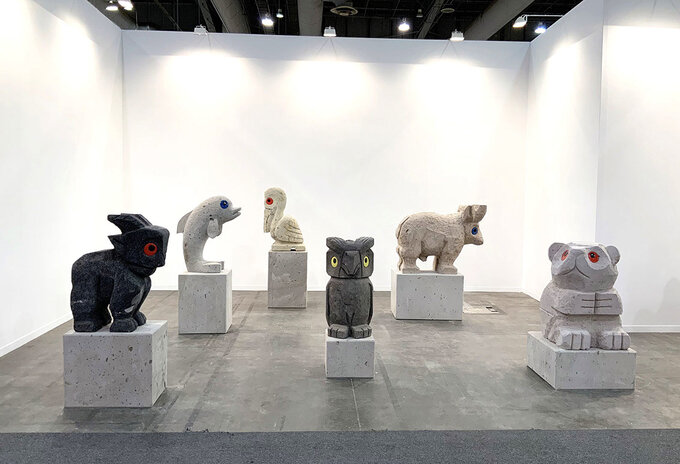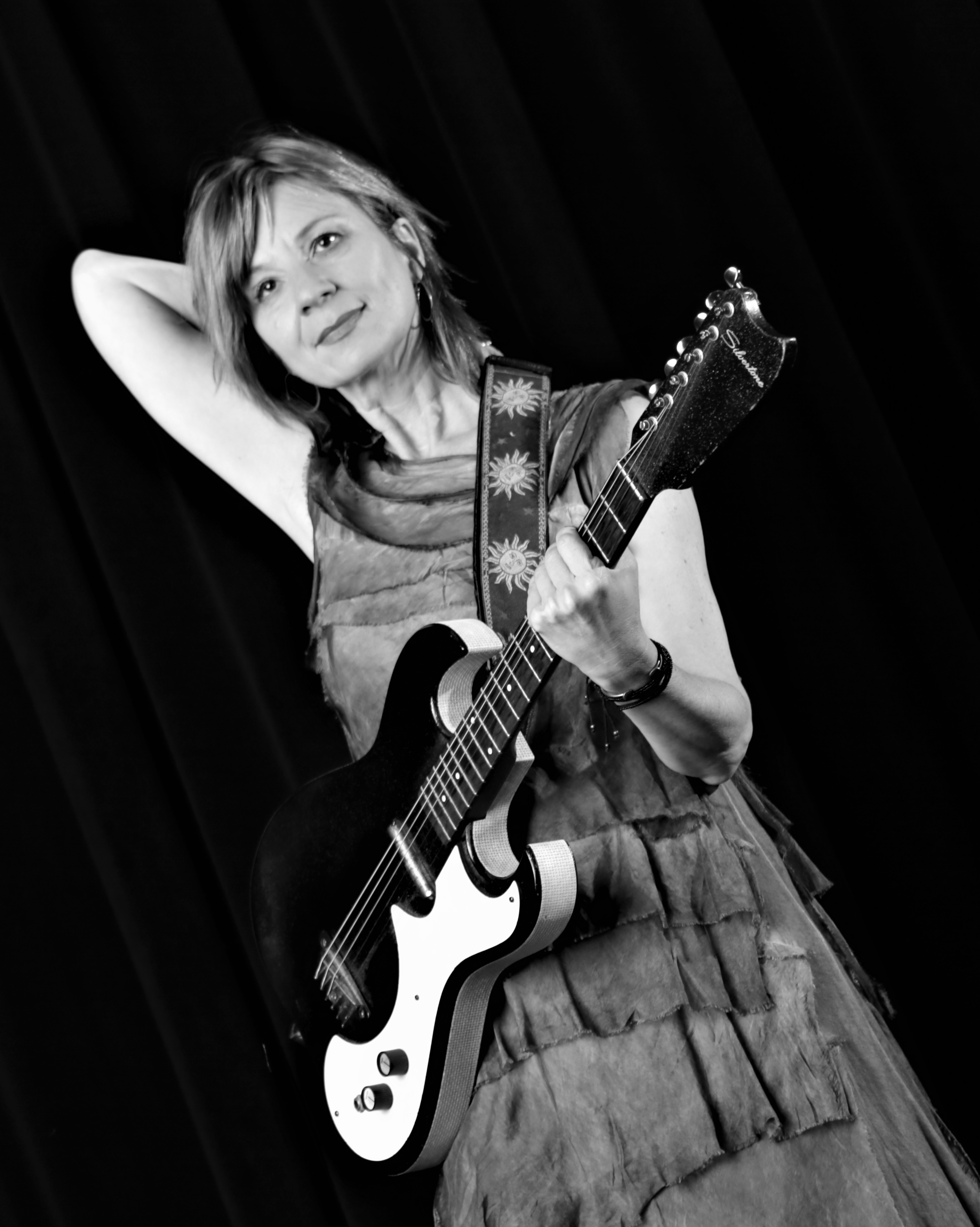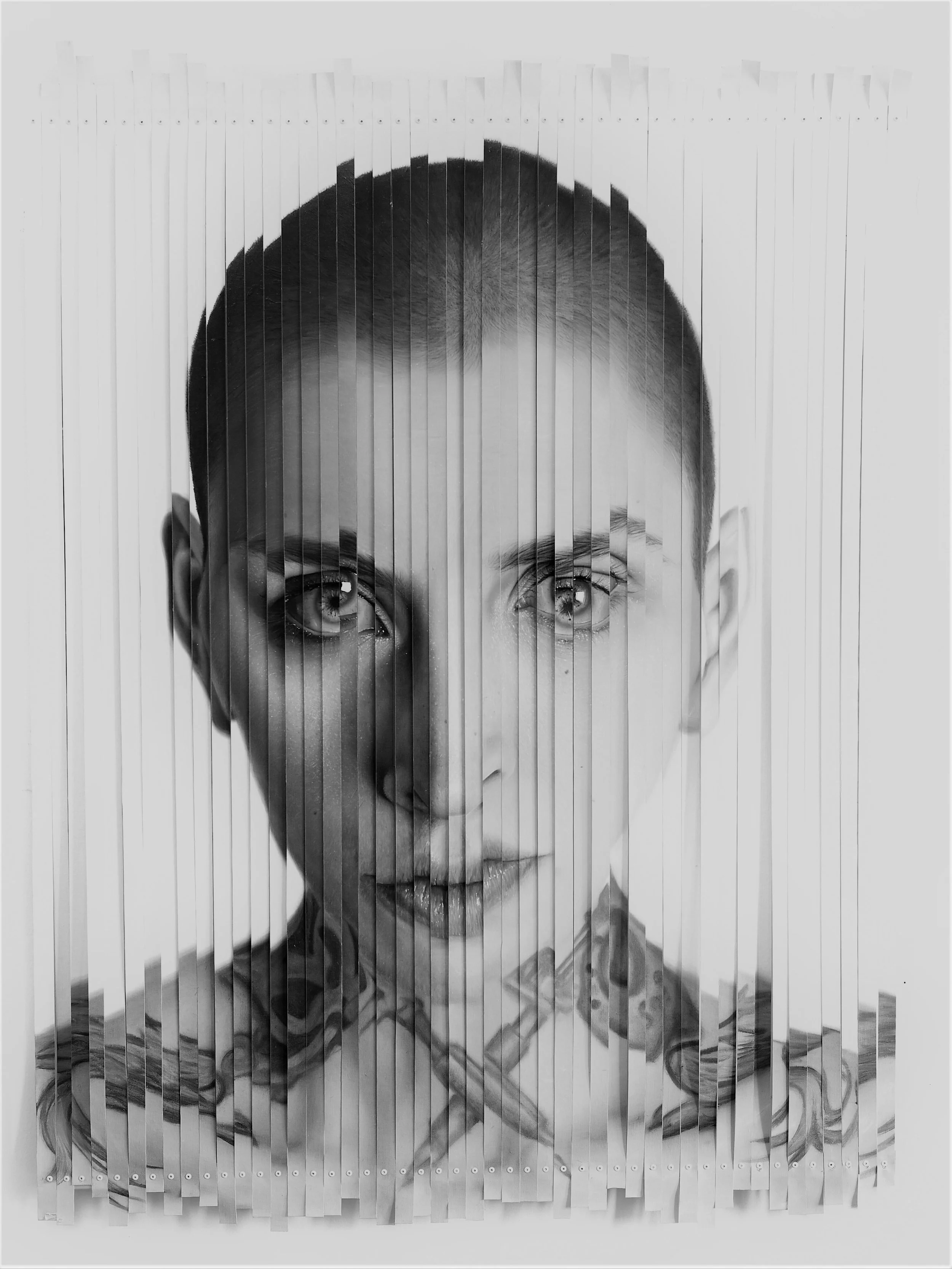OLAF BREUNING
“Pelican,” 2020, Lemon white stone, ceramic eyes, 80 x 53 x 31 cm (31,5 x 20,87 x 12,20 in) Sculpture, 71,1 x 77,5 x 53,30 cm (28 x 30,5 x 21 in) Pedestal
Olaf Breuning is a Swiss-born artist based in New York. He incorporates a colorful and playful aesthetic into a wide range of mediums including film, drawings, performance, and sculpture. His works are held in collections around the world. In this interview, he talks about possible future filmmaking ideas, his recent Mexico City sculpture show Sad and Worried Animals, drawings he made while sailing aboard the Queen Mary, roles for artists in the world, and more.
Interview by Mia Gaudin
It’s been such a pleasure to research your work as I’ve been preparing for the interview. There’s just so much of it! So, let’s start with a question about that diversity. You’ve made drawings, films, sculptures, paintings. Can you tell me about the exploratory nature of your art practice — how do you keep coming up with new ways of making? Do you think there is central question that you’re investigating?
Usually the world is a colorful place (not at the moment) and I think it is the right approach to talk about it with different mediums which result in different points of view. However, my language is always the same, so that keeps it all together.
Despite this constant change and reinvention in your practice, you’ve also said that you want to keep working on your Home films for your whole life, that when you’re an old man you’ll be making “HOME 50.” What is it about that project that appeals to you so much?
Well, I take it back. I think I’ve moved on. The Home movies were born in a time when the the media was different. It was the high time of Curb Your Enthusiasm, Jackass and many other straight forward, often not polite, productions. People loved to cross the border and do things a little bit more extreme. Today we live in a very polite time, we walk on eggshells, you can’t say anything against anyone. Especially in the United States.
Of course, I think it is not bad to be polite, but when I look at the Home movies today I often think, oh man, I could not do that today...so if there is a next Home movie in future, it would be different. I am thinking about making another movie soon. And please don’t misunderstand me! I love the three Home movies: they are really great. They are entertaining and funny to watch…which you can't say about a lot of art movies.
While filmmaking is relatively resource intensive, the opposite can be said of a drawing practice. All that is needed is a pencil and paper. You have an extensive practice and have published several books of drawings. What do you see as the value of drawing, particularly in an art world that celebrates grand scale art that is effectively executed by casts of assistants and technicians?
That’s why I work with different mediums: I also do grand-scale art with assistants and technicians but, as you mentioned, what is nice about the drawings is you need only a pencil and paper (and a table and a chair). So, in case I want to talk about the world and my life and I am not involved in a big production, I can sit down and make a drawing. It takes a few minutes. They are very simple. That is the beauty of this medium for me — it is the most straightforward way for me to talk as an artist.
The drawings of yours I’m most familiar with are in Queen Mary II, the book you published following transatlantic cruises between London and New York. When I first came across the work I was expecting to see drawings that logged daily events aboard the ship, and was looking for some kind of insight into this journey as it is one many of my own ancestors took generations ago. But the work does not present as a log, and there is no explanation of the trip context in the book. How did you intend for a reader or viewer to experience the work?
I never intend anything of the viewers looking at my art. Honestly, producing art is my way to go through this life and obviously I need to do it to remain happy. The drawings are so simple, but they need [a particular] head space to produce. The reason why I crossed the Atlantic twice on the Queen Mary was so that I could sit in my cabin like a monk, with my sound system I brought with me, and make drawings. It was very inspiring for me. I could sit in isolation for eight hours a day and after that I could leave my cabin and join the Las Vegas-style entertainment. A very nice contrast. Both times I was very productive.
Rampant tourism via air travel is certainly out of fashion (or law) in this current moment, and is unlikely to return to how it was, anytime soon at least. Can you tell us about your experience of slow travel aboard the Queen Mary II and what you think we might have to get used to with new/old forms of travel in the future?
Well, I am not nostalgic, but of course traveling slow is very nice. You feel the distance. And I often think how adventurous it had to be a few hundred years ago to go somewhere. Again, we have optimized mobility so much in the last century: for me as an international working artist, fast travel is (or was) essential. But that might change.
For a few years I haven’t felt so good about it anymore, knowing that we really have to change our way of life in order to make global warming not as bad as it already will be. I hope I will be able to manage this better in the future and only travel if really necessary…I did always think it was wrong to pay only a hundred euro to fly from England to Greece for a weekend of fun. This is not the time to make it right for all the people, it’s time to make it right for the environment.
When I first saw your sculptures Sad and Worried Animals, they reminded me of small bone carvings of arctic animals I’d seen at an Inuit museum on the shores of Hudson Bay, Manitoba. But of course your Sad and Worried Animals can’t be held in the hand and were not just created by you, chipping away alone. Can you tell us about the scale of the works, the process for having them made, and what influenced those decisions?
These sculptures are not based on the Inuits, but on Peruvian soapstone carvings. There are many of these carvings, made on a small scale. I discovered them during my travels in Peru and now I order them on Amazon. After I make a selection, (I’ve done ten so far), I send them to my producer in Mexico and they blow them up; with my guidance, of course. The eyes are made out of ceramic and all the animals look upwards. The idea behind this work is that the animals are somehow fucked. After the last mass extinction 65 million years ago, the remaining species could evolve over millions of years from what they are today.
One species, the human, started its journey a few million years ago. All went okay, until about 10,000 years ago when the humans started to organize themselves and build structures and larger communities. In the last hundred years the humans changed the planet so drastically that we have to worry about global warming and viruses spreading too fast, resulting, as we see now, in pandemics and other ugly side products of being the dominating force on the planet. Long talk, short meaning: in all of that, animals have nothing to say! They just wait until the hammer hits their heads from above (that’s why the look up): they are worried and sad. That simple.
Sad And Worried Animals, 2020, Zona Maco, Mexico City, Nils Staerk Gallery
“Bear,” 2020, Cantera pinion stone, ceramic eyes, 80 x 65 x 56 cm (31,5 x 25,59 x 22,05 in) Sculpture, 30,5 x 63,5 x63,5 cm (12 x 25 x 25 in) Pedestal
“Owl,” 2020, American black stone, ceramic eyes, 80 x 35 x 35 cm (31,5 x 13,78 x 13,78 in) Sculpture, 61 x 45,7 x 48,30 cm (24 x 18 x 19 in) Pedestal
“Dolphin,” 2020, White cantera tinajero stone, ceramic eyes, 80 x 13 x 60 cm (31,5 x 5.12 x 23,62 in) Sculpture, 40,6 x 38.7 x 30,5 cm (16 x 15,25 x 12 in) Pedestal
In your recent series, Brainwashed by Nature, you’ve used woodblock prints to make paintings that clearly symbolize the natural world, with the aim of both creating aesthetically pleasing work, but also engaging the viewer to at least think about climate change. What role do you think artists have in precipitating or supporting social or political change?
I honestly think artists do not have a really big role in fighting against the bigger issues we have in this world. Most of art is only seen by art enthusiasts and this is a very small group of people compared with the world population. Most of the questions asked in contemporary art are far away from “how do we make this world a better place.” They are most likely more like “how do I get better shows? How do I get more famous? How do I manage to have a well-invested art collection? Where is the next art fair?”...all very self-centered motivations.
Again, I don’t want to be negative, I love the art world, since I am myself a self-centered character! I think that’s also essential to being an artist. As an artist you have to be different in one way or another; to create an interesting personal language. But I would never put myself on the same level as someone who really goes out there and tries to change things, hands on. I would never be that arrogant and think that my art will add something to solve the major problems we have. Just personally, it makes me feel better to talk about it with my work.
My new paintings can be seen just as colorful and interesting canvases and I am not disappointed if people don’t see my thoughts about global warming in them. Maybe it is just my personal way to digest this world I am living in, and I feel very privileged and lucky that I am able to do so. Many people don’t have this luxury!
Brainwashed by Nature, Carbon12 Gallery, Dubai, 2020
“Universe,” 2019, Wood cut print, gesso and acrylic on canvas, 193 x 146 cm, 76 x 57 1/2 in
“Sunset,” 2019, Wood cut print, gesso and acrylic on canvas, 198 x 143 cm, 78 x 56 1/4 in
You’ve said in a previous interview that you don’t want to just stay in the studio and draw and paint, but you “like to go out into the world and work with real things.” How has your practice changed in the last few weeks, and what have you learnt from this time?
Haha, that previous interview was maybe ten years ago, meanwhile, I am renovating a space to make an official painting studio! I am a painter now! It took me about two years to get to a point of being happy with my paintings. Five years ago I moved my studio from Manhattan to beautiful upstate New York, and maybe this changed my practice a little. I need something I can do in my studio. “To go out in the world” up here is very one dimensional: beautiful nature and not much more. New York City was more exciting. And as for the last few weeks, I’ve really enjoyed this time: no emails, no deadlines, just the perfect storm for an artist, actually.
See more of Olaf’s work on Instagram and his site
You might also like our interviews with these artists:
Mia Gaudin is a writer and lawyer from New Zealand who has spent the last two years living between Wellington, Mexico City and Brooklyn. Her essays and short stories have been published extensively and she is now working on a novel.

















